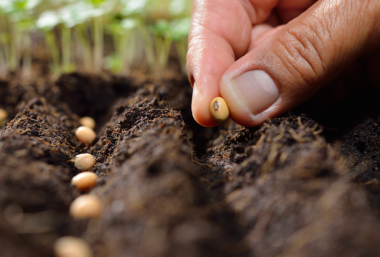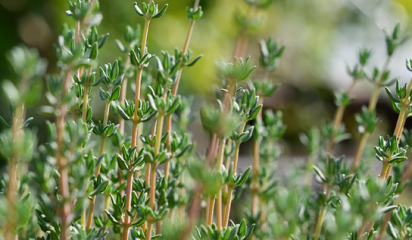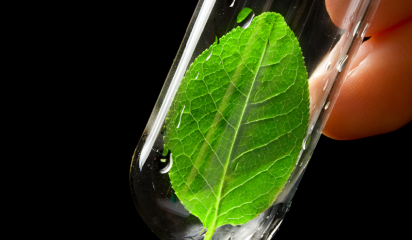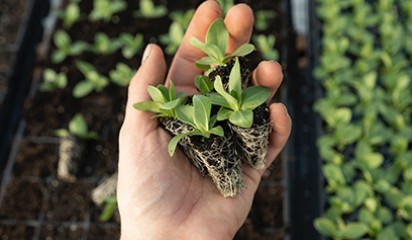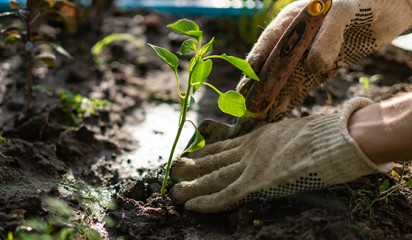Encouraging the development of new varieties of plants, vegetables, fruit, and seed crops has a vital role to play in global food supply.
Plant variety protection in Australia and New Zealand is a lesser known but growing type of intellectual property (IP). Internationally plant variety right (PVR) applications have grown 12% since 2020, while patent applications only increased by 3.6%.
From July 2021 to June 2022, there were almost 80 PVR applications granted by IPONZ, and AJ Park was the agent for 20% of these cases.
Numbers for July 2022 to June 2023 are tracking to be similar, and we’re filing more applications internationally as well because overseas markets are keen to benefit from the innovative breeding work done in New Zealand.
It’s also a highly specialised and fascinating field of IP, as our experts Helen Bellchambers and Dr Nikki Templeton explain.
What is a plant variety right?
A PVR is a legal way to acknowledge all the work that a plant breeder puts into developing a new variety. Like other forms of IP, it provides an incentive to create new and innovative products – in this case, plants.
While they are referred to as PVRs in New Zealand, they are called Plant Breeders Rights (PBR) in Australia. As AJ Park regularly works across both jurisdictions, the two terms are used interchangeably depending on where protection is being sought.
It can often take 15-20 years of development by a breeder before a new plant variety can enter the market. The protection offered by a PVR allows the breeder to recoup costs associated with breeding and developing of new varieties, as well as make money on their new variety, for example by licensing the variety and earning a royalty. Alternatively, a new variety may provide an agricultural or horticultural business with a competitive advantage, and a PVR can stop competitors piggybacking off their R+D work.
PVRs can be granted for a wide range of plants, everything from roses to raspberries to ryegrass!
Next time you’re visiting your local garden centre, take a closer look at the plant labels – they will tell you whether a PVR or PBR is in place.
Which part of a plant can be protected?
The PVR applies to the plant as a whole. For a plant to gain protection, it must be physically distinct from other similar varieties.
Once you have secured a PVR, protection also extends to the fruit, seeds or flowers it produces (reproductive material). The PVR owner will also have the exclusive right to sell and commercialise the fruit or the seeds.
Helping to secure global food supply
Breeders and growers around the world are increasingly focusing on developing plants that can cope with the planet’s changing environment.
For instance, researchers are developing strains of crops that are capable of withstanding longer droughts and wetter monsoon seasons. Extreme temperatures can also create new fungi and pests, which is motivating scientists to develop disease-resistant varieties. Another area of focus is breeding varieties which retain characteristics that consumers prefer, such as fruit colour and texture, as temperature and UV exposure during traditional growing seasons is changing.
Plants may be used in other ways to help combat climate change. The World Economic Forum reports that scientists are developing a range of genetically engineered crops that can capture carbon dioxide from the atmosphere, and either turn it into oxygen or store it in the soil (source).
For agriculturally based countries such as New Zealand and Australia, plant and crop innovation is also a valuable source of domestic income.
New Zealand companies hold many PVRs that generate significant export earnings for the local economy. Both directly, through licensing and sales of protected varieties, and indirectly, for example by using protected ryegrasses to improve yields on dairy farms.
What is the role of genetic modification?
Producing plants with new and improved characteristics – such as a heat-resistant tomato plant, for example – can be achieved one of two ways.
Firstly, via naturally-occurring mutations which enable the plant to withstand heat – the classic “survival of the fittest” can happen in nature without any human intervention. A tomato plant which is able to withstand heat will survive a heatwave and will drop seeds that grow again next season. Plants that are unable to withstand the heat will not produce tomatoes and will therefore not produce any seeds.
Secondly, breeders and scientists can create a heat-resistant tomato – either by selective breeding (where parent plants are carefully chosen to create improved offspring), or genetic modification (which alters the genome of the plant).
Because the PVR applies to the plant as a whole, it is not possible to ‘pick out’ the genetically modified aspects of it and protect those with a PVR (but they may be eligible for patent protection).
Plant IP is a specialised field
Plant IP is a niche field. Here are just some of the intricacies to consider:
- Nature can be a fickle laboratory
Working with living materials out in nature has its challenges. With a patent, you don’t have to worry about a bug or an adverse weather event disrupting your trial, forcing you to start all over again. Nevertheless, there are often extensions available for things like this – and your IP specialist can advise on how to keep things on track. - The new variety must meet certain criteria
To qualify for a PVR, a new plant variety must pass what’s known as a DUS examination – which stands for distinct, uniform and stable. In other words, is your tomato plant distinct from other tomato plants? Is it uniform, in that every plant looks and performs the same? And is it stable, meaning the unique changes aren’t lost through different generations of the plant. - Timing of your application
The novelty deadline to file a PVR application is based on the date of first commercial use of the variety, so it is important to talk to an IP expert before commercialization of your variety. It is important to keep a record of how your new variety was developed, including information about the breeding process and the parent plants. You should also collect photographs of your variety at different stages of its life cycle. If your variety is a world first, we can work with you and the office to develop an appropriate testing guide. - Australian specific rules
In Australia, applicants are required to engage a qualified person (QP) to help arrange and run their DUS trial. Prior to grant, a sample of the applicant’s variety must also be submitted to a genetic resource center (GRC) where it will be maintained for the term of the grant. - The PVR is just one type of protection
In addition to gaining the PVR, you’ll also want to think about commercial contracts and licensing agreements, these can cover who is going to grow the variety for you, and sell it for you. The other important aspect you’ll need is a trade mark. As part of your PVR application, you have to give your variety a new name that’s novel and identifiable, but it’s good practice to use something different from your trade mark. - Other people can piggyback on your PVR
Once you have a PVR, other people can use your plant for research and development of their own. For instance, they could take your heat-resistant tomato plant, but decide to introduce further changes. Depending on the extent of these changes, their new variety could be an essentially derived variety, which comes with further protections in some jurisdictions.
Like to learn more about PVRs?
Check out our other articles, including this update on NZ’s new Plant Variety Act 2022. Or listen to this podcast interview with AJ Park’s Dr Nikki Templeton.
If you have a specific question or need advice, you’re welcome to contact our team of PVRs specialists.
